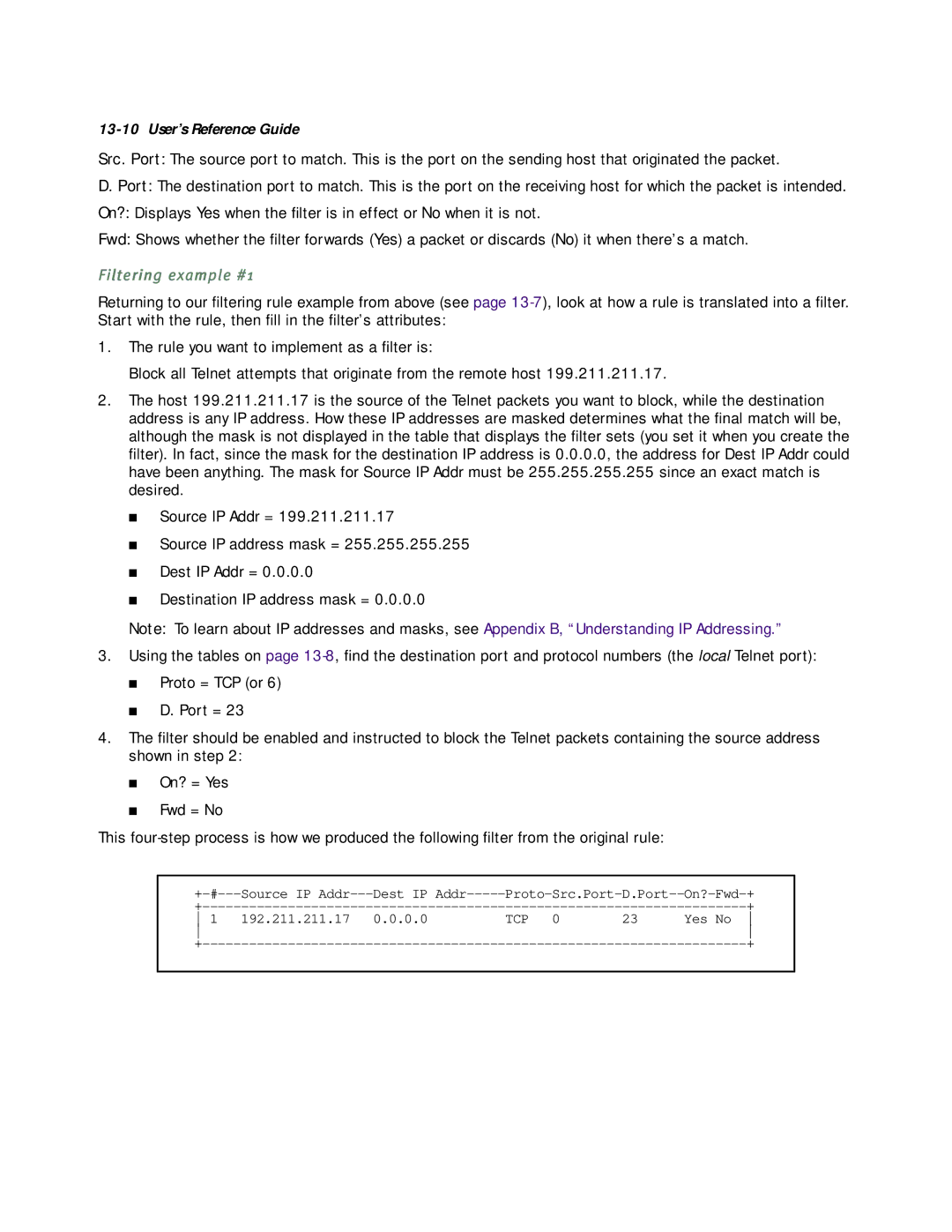13-10 User’s Reference Guide
Src. Port: The source port to match. This is the port on the sending host that originated the packet.
D. Port: The destination port to match. This is the port on the receiving host for which the packet is intended.
On?: Displays Yes when the filter is in effect or No when it is not.
Fwd: Shows whether the filter forwards (Yes) a packet or discards (No) it when there’s a match.
Filtering example #1
Returning to our filtering rule example from above (see page
1.The rule you want to implement as a filter is:
Block all Telnet attempts that originate from the remote host 199.211.211.17.
2.The host 199.211.211.17 is the source of the Telnet packets you want to block, while the destination address is any IP address. How these IP addresses are masked determines what the final match will be, although the mask is not displayed in the table that displays the filter sets (you set it when you create the filter). In fact, since the mask for the destination IP address is 0.0.0.0, the address for Dest IP Addr could have been anything. The mask for Source IP Addr must be 255.255.255.255 since an exact match is desired.
■Source IP Addr = 199.211.211.17
■Source IP address mask = 255.255.255.255
■Dest IP Addr = 0.0.0.0
■Destination IP address mask = 0.0.0.0
Note: To learn about IP addresses and masks, see Appendix B, “Understanding IP Addressing.”
3.Using the tables on page
■Proto = TCP (or 6)
■D. Port = 23
4.The filter should be enabled and instructed to block the Telnet packets containing the source address shown in step 2:
■On? = Yes
■Fwd = No
This
Source IP | Dest IP | ||||
|
|
| + | ||
1 | 192.211.211.17 | 0.0.0.0 | TCP 0 | 23 | Yes No |
|
|
|
| ||
|
|
| + | ||
|
|
|
|
|
|
